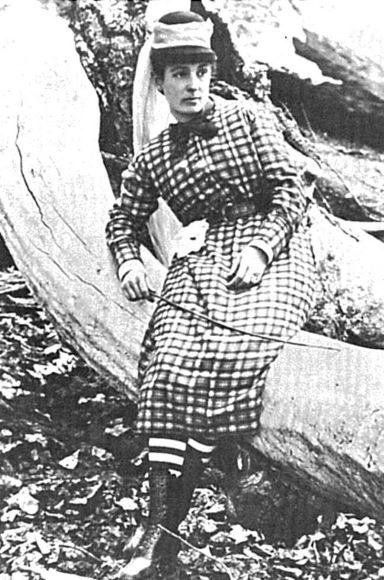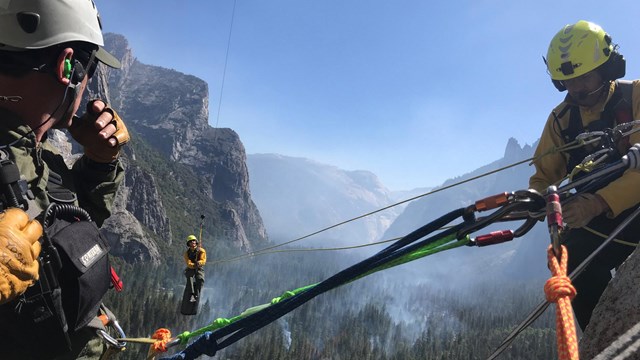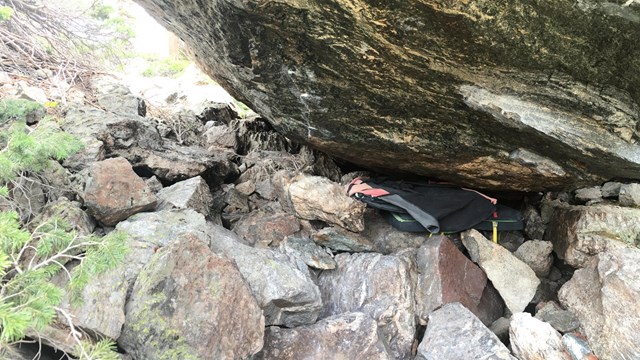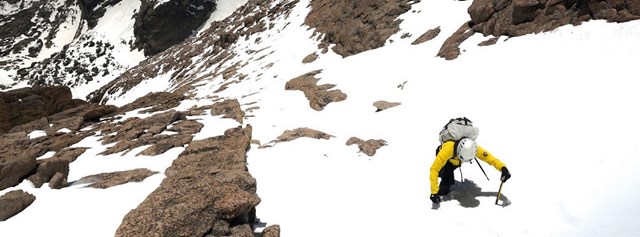|
Today, climbing opportunities can be found in approximately 25% of National Park Service (NPS) units, but climbing itself pre-dated the establishment of the national park system. The earliest climbs were typically associated with exploration, primarily for mapping and scientific purposes. Mountaineering, as a recreational activity to ascend a summit, didn't reach the United States until the early 1900’s. 
Notable first ascents from that era include:
By the early 1930s, rock climbing, the ascent of steep rock formations, was emerging in some national parks. After World War II, climbers began seeking out crack climbs that could be protected using hammer-driven steel pitons.
During this period, NPS climbing closures or permit requirements existed in some parks. These were primarily based on safety concerns for climbers and rangers as many parks lacked climbing and rescue capabilities during this period. The demand for guiding grew, as rock climbing became attractive to more park visitors. The mid 1980’s to early 1990’s saw an explosive growth in the popularity of climbing and a shift in style and ethics. The interest in difficult, unclimbed rock faces led to a dramatic increase in route development in some national parks. Ascending rock faces without continuous crack systems involved the placement of expansion bolts or “fixed protection.” The route development and popularity of bolt-protected climbs resulted in increased impacts associated with climbing activities. The use of power drills and bolting on rappel facilitated quicker, easier installation of bolts. Style and ethical debates surfaced among climbers and land managers began to address the management of climbing activities and specifically, the installation of fixed anchors. In the late 1980’s a few national parks conducted studies of climbing use and resource impacts. During the 1990’s, various national parks developed climbing management plans. On a national level, the NPS proposed service-wide guidance on managing climbing in wilderness and non-wilderness. In 2013, NPS policy for managing climbing activities in wilderness was issued. Visitors can find climbing management plans and other park specific climbing information on national park websites. 
Staying Safe
Knowledge of personal safety, appropriate skills and equipment are just a few things needed to stay safe. 
Outdoor Ethics and Stewardship
Develop a personal set of outdoor ethics and become a steward of public lands. 
Park-specific Regulations
Learn more about the types of requirements and regulations climbers might encounter in each of our Parks |
Last updated: November 10, 2021
